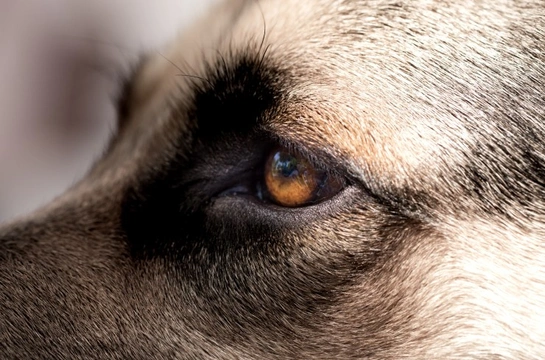
Why do dogs have a third eyelid?
We humans have two eyelids-a top lid and a bottom lid, comprised of two folds of thin skin that cover our eyes when we blink or close our eyes. However, dogs-and a great many other animals too-have three eyelids rather than two, and in the dog, the additional eyelid lies along the inside corner of the eyes, underneath the top and bottom lids.
Dogs can cover around half of their eyeballs with their third eyelid, which means that in dogs, it is known as a vestigial third eyelid-but some other species of animals such as many reptiles and even sharks have the ability to close the third eyelid across their whole eye, obscuring the entirety of the lens!
If you have seen your dog’s third eyelid or have spotted this third membrane partially covering your dog’s eye and wondered what it is and what it is for, in this article, we will look at the third eyelid in dogs in more detail, including what it does, why they have one, and when you might be able to see it-as well as how to watch out for potential problems. Read on to learn more.
What is the third eyelid?
The third eyelid is also known as the “nictitating membrane,” and is rather different to the other two eyelids in that it is made of a thin, moist membrane rather than the skin comprising the upper and lower eyelids. It does not have fur, and may vary in colour depending on the colour of your dog, from greyish to almost clear-but it should never be bright red, which indicates an inflammation or problem.
When your dog blinks, their upper and lower eyelids briefly cover their eyes-and of course, the upper and lower lids also cover the eyes in sleep-and blinking and closing the eyes for sleep also moves the third eyelid underneath the top and bottom lids to partially cover the eye too.
What does the third eyelid do?
As mentioned, the third eyelid of the dog is a vestigial membrane-this means something that is a side-effect or leftover of evolution that has not been fully lost-like the coccyx or tail bone in humans!
While other animals with a third eyelid have a full nictitating membrane that can cover over the whole eye, dogs only have around half of this, which is what makes it vestigial and not full. However, it still performs a range of purposes for the dog, such as helping to protect the inner corner of the eyes from damage, dust and contaminants, and to help to clean and sweep muck and dirt away from the eye to the corners, where it is expelled.
Around 30% of the dog’s tear ducts are affixed to the base of the third eyelid too, helping to clean and lubricate the dog’s eyes, as well as offering an additional layer of protection that works with the upper and lower lids to keep out dust and muck. There are also glands within these tear ducts that produce some of the antibodies needed to fight off and neutralise certain types of infections that can affect the eyes too.
Do all dogs have a third eyelid?
Unless a dog has had their third eyelids removed for any reason-which is very uncommon, and not a standard method of treatment for any condition or problem relating to the eyes, as removal of the third eyelid is apt to cause more problems than it solves-every dog has a third eyelid, regardless of their breed or type.
However, because the third eyelid usually only covers part of the eye when the eye is closed, you will not generally be able to see it simply when looking at your dog, unless they have a problem with their eyes or eyelids such as cherry eye, a condition that tends to be more common in breeds with large protruding eyes like the pug. But when your dog has just woken up and is still blinking and focusing, or if they are just dropping off to sleep or otherwise very relaxed, you may be able to spot the presence of their third eyelid showing in the inner corners of the eyes.
As long as it does not look red, sore or inflamed, and retracts back into the corners when your dog wakes up fully, this is not a problem.
Problems with the third eyelid in dogs
There are several different problems and issues that can arise with the third eyelid of dogs, and a third eyelid that is showing continually or that appears often other than when your dog has been sleeping or had their eyes closed can indicate that something is wrong.
Dogs that have a systemic illness or problem that is making them feel generally unwell and under the weather may have a visible third eyelid, and conditions such as ectropion and cherry eye can all expose the third eyelid too. Allergies that lead to inflammation and irritation of the eye can make the third eyelid red and sore, again, making it visible.
If your dog’s third eyelid is visible when it shouldn’t be, or looks red or sore, it is important to ask your vet to check it out and treat the problem.



